Luteolin is a bioflavinoid found in fruits and vegetables, particularly celery and chrysanthemum flowers, and is a powerful anti-inflammatory.
What is Luteolin?
Luteolin is a bio-flavonoid found in different plants such as vegetables, medicinal herbs, and fruits, which has been shown to have anti-inflammatory and anti-cancer properties.
The word flavonoid is based on the latin word flavus which means yellow or blonde, because flavonoids contribute to the colourful pigments of many fruits, herbs, vegetables and medicinal plants.
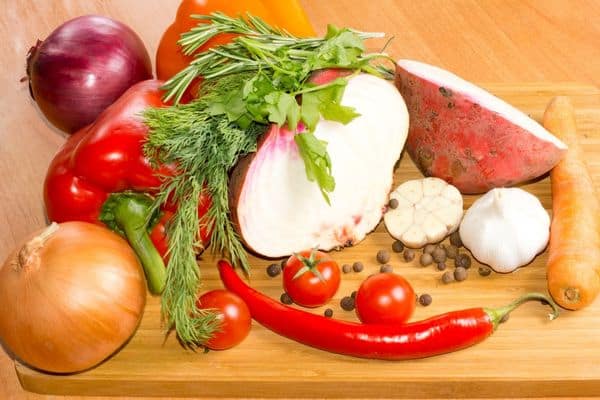
Luteolin is one of more than 5000 known flavonoids, and many have been found to have positive effects on human and animal health and are being studied for disease therapy and prevention.
Other flavonoids of interest include:
- Apigenin – part of the Huberman Sleep Cocktail
- Quercetin – a well known anti-inflammatory supplement
- Anthocyaninins – found in berries and a recommended brain health supplement
Read on to learn about PEALut, a new formulation of Luteolin which is micronized (mixed up into very small particles) with a specific fat (Palmitoylethanolamide or PEA) that seems to be better absorbed through the gut.
Luteolin Brain Benefits
Luteolin has anti-inflammatory, anti-cancer, and neuroprotective effects.
Luteolin is a potent anti-inflammatory, luteolin can suppress proinflammatory mediators (IL-6, TNF-α and COX-2 and others) to reduce inflammation.
High levels of cytokines, such as interleukin (IL)-1β, tumor necrosis factor (TNF)-α and IL-6, are associated with chronic diseases like rheumatoid arthritis, asthma, atherosclerosis, Alzheimer’s disease and cancer.

Luteolin’s known anticancer properties include stopping the progression of cancer cells (cell transformation, metastasis, invasion, and angiogenesis) through multiple mechanisms including suppression of kinases, regulation of cell cycle, induction of apoptotic cell death, and reduction of transcription factors.
In addition, luteolin has strong neuroprotective effects. Luteolin can suppress neuroinflammatory responses, downactivating microglia and astrocytes, and reducing oxidative stress.
Studies have also shown that luteolin exhibits its neuroprotective effects by suppressing immune cell activation, such as mast cells, and the inflammatory mediators released from these cells.

Luteolin has been shown to reduce the severity of neuroinflammatory diseases such as Alzheimer’s Disease, Parkinson’s Disease, Multiple Sclerosis, and Traumatic Brain Injury.
And in exciting recent news – Luteolin has been shown to restore the sense of smell in people with Long-COVID! I wonder if it could help with other aspects of Long-COVID too!
Luteolin vs Lutein
Luteolin and Lutein are often confused as their names are so similar (again both are named after another latin word for yellow or saffron – luteus). If you search for one you will often get results for the other one, and if trying to purchase one as a supplement you could accidentally get the wrong one.
While they are both compounds derived from plants, luteolin and lutein are not same thing!
Luteolin is a flavonoid, and this is Luteolin’s chemical structure, it is also known by the chemical name 3,4,5,7-tetrahydroxy flavone. Luteolin has many anti-inflammatory, anti-cancer and neuroprotective properties.
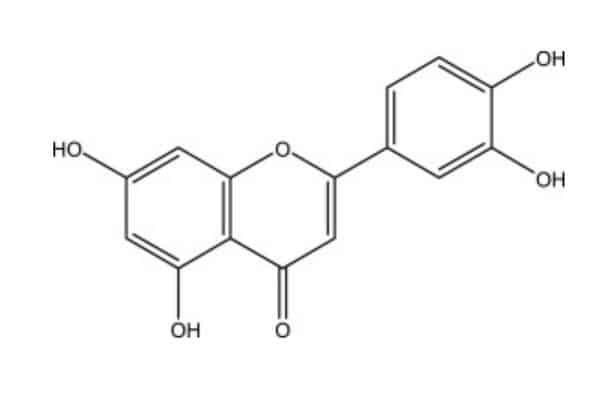
Lutein is is a xanthophyll and one of 600 known naturally occurring carotenoids, it is found in green leafy vegetables such as spinach, kale and yellow carrots. Lutein has been studied as a supplement to help with vision, specifically to treat macular degeneration.

Foods High in Luteolin
Plants rich in luteolin have been used widely in Chinese traditional medicine. High levels of luteolin are present in many fruits and vegetables, such as celery, chrysanthemum flowers, sweet bell peppers, carrots, onion leaves, broccoli, and parsley.
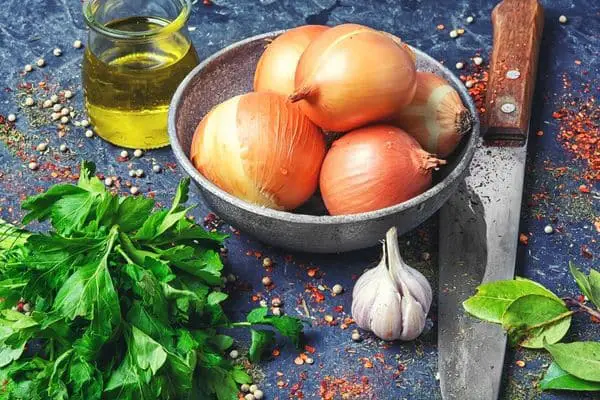
The following listing of the mg of luteolin in a serving size come from this article
Amount of Luteolin in mg per serving size of various foods and herbs:
- Kiwi Fruit: 1-2mg in 100g
- Spinach: 1-13mg in 200g
- Parsley: 1mg in 5g
- Lettuce 1-3mg in 100g
- Artichoke heads 2.3-7.5mg in 200g
- Chicory Leaves: 1-333mg in 100g
- Rutabega: less than 1mg in 200g
- Brocolli: 1-5mg in 200g
- Chinese Cabbage: 1-2mg in 200g
- Peas: less than 1mg in 100g
- Celery Stalks: 2-4mg in 200g
- Celery Hearts: 7mg in 200g
- Chinese Celery: 70mg in 200g
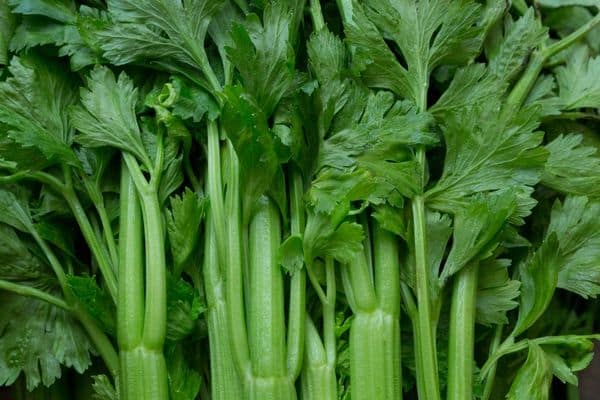
- Millet: 10mg in 28g
- Chickpea: less than 1mg in 28g
- Rice (white, red, brown or black): less than 1mg in 28gOlive Oil: less than 1mg in 15g
- Grapes: 1-5mg in 200g
- Black Olives: 2-9mg in 50g
- Green Olives: 1mg in 50g
- Watermelon 2-4mg in 300g
- Bell Peppers: 1-13mg in 100g

- Fenugreek seed: 10mg in 2g
- Peppermint: 1-61mg in 2g
- Oregano 18-23mg in 2g
- Shiso: 1-16mg in 2g
- Rosemary: 0-13mg in 2g
- Sage: 1-22 mg in 2g
- Red or white wine: less than 1mg in 100mL
- Orange juice: 1mg in 250mL
- Chamomile flowers: 1mg in 2g
- Tansy leaf: 17mg in 2g
- Green, black or oolong tea: less than 1mg in 2g
- Rooiboos tea: 3-12mg in 2g
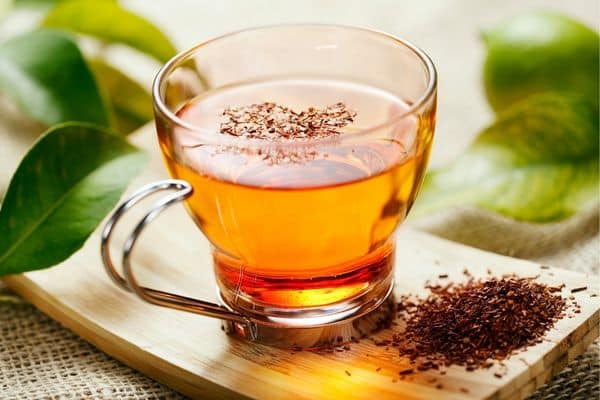
However, how much of the luteolin gets absorbed through diet is unclear. The review article noted that in one study, after drinking Rooibos tea with a high concentration of luteolin, the luteolin measured in the blood was quite low.
Best Luteolin Supplement: Liposomal Luteolin?
And then we get to the ability to absorb luteolin (getting the drug into your body from your intestine). Luteolin is not very water soluble, which lead to a real problem in absorption, getting luteolin through your intestine into your blood.
And we are talking really poor absorption, like only 10% getting into the blood.
The solution may be a liposomal formulation, a mix of the supplement with an oil. One supplement mixes olive pomace oil is mixed with luteolin, with or without quercetin.
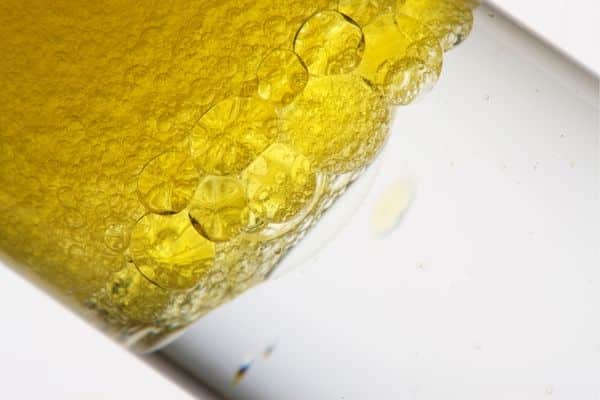
What can you do to improve the absorption? Do you need to buy an expensive formulation or can you swallow some oil with your luteolin supplement to improve absorption? This article has an extensive explanation of various factors luteolin absorption but is really hard reading.
This article made me think that you probably do need some sort of super mix of luteolin and an oil so you don’t lose almost all of the luteolin you are taking. As shown below, a microemulsion of luteolin was absorbed much better in rats than luteolin just mixed with an oil or just luteolin in water.
PEALut Luteolin
Another Luteolin supplement formulation is PEALut. This specific formulation is the fat Palmitoylethanolamide (PEA) that is ultramicronised (mixed by sonication) with the Luteolin to increase bioavailability.
PEA is a phospholipid found in soy lecithin, egg yolk, and peanut flour. Palmitoylethanolamide on its own has shown neuroprotective, anti-inflammatory, and analgesic functions and is currently used for the treatment of fibromyalgia, osteoarthritis, carpal tunnel syndrome, and many other conditions.
In addition to these benefits, the properties of PEA, and the way it can be micronized or ultra-micronized with compounds to maximize their bioavailability and efficacy, has led to research for new therapeutic agents for neurodegenerative diseases.
Luteolin Supplement Options
Interested in trying Luteolin? (Of course always get advice from your own health professional, this is not medical advice!)
Here are some options of where you can purchase.
Palmitoylethanolamide on Amazon
Mirica is a brand that has the micronized PEA Lut (PEA with luteolin) with the much higher absorption:
Mirica® Palmitoylethanolamide (PEA) and Luteolin
Mirica® Advanced Palmitoylethanolamide (PEA) and Luteolin
Luteolin Supplement Dosage
The dosages used in the studies was usually about 100mg per day.
In a study for loss of smell with covid the dose was 70mg Luteolin and 700mg palmatoylethanolamide PEA (Glialia brand). In a study with autistic children the dosage was 1 capsule per 10kg of weight, with the capsule containing Luteolin 100mg, Quercetin 70mg, Rutin 30mg in olive kernal oil.

The total amount of combined flavonoids should not exceed 1.5mg /day especially in people who are slow metabolizers and large concentrations of lavonoids in the blood could inhibit liver enzymes, or accumulate in the intestine and inhibit the gut microbiome.
Luteolin Supplement Summary
Luteolin is a bio-flavonoid found in different plants such as vegetables, medicinal herbs, and fruits.
Luteolin is a potent anti-inflammatory, luteolin can suppress cytokines which are linked to inflammation and chronic diseases like rheumatoid arthritis, asthma, atherosclerosis, Alzheimer’s disease and cancer.
Luteolin exists in many foods, particularly celery, spinach, artichoke, rooiboos tea, fenegreek seed and peppermint.
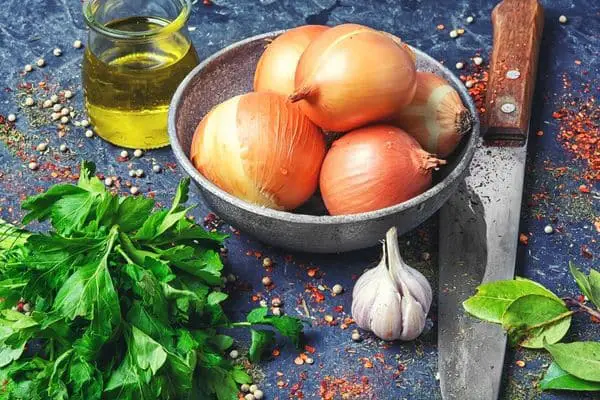
However Luteolin does not get absorbed through the gut very well. So taking Luteolin in a mixture with a fat seems to be important for absorption.
PEALut is new formulation of Luteolin which is micronized (mixed up into very small particles) with a specific fat (Palmitoylethanolamide or PEA) that seems to be better absorbed through the gut.
References
- Luteolin, a flavonoid, as an anticancer agent: A review
- Autophagy regulation using luteolin: new insight into its anti-tumor activity
- Luteolin supplements: All that glitters is not gold
- Paving Luteolin Therapeutic Potentialities and Agro-Food-Pharma Applications: Emphasis on In Vivo Pharmacological Effects and Bioavailability Traits
- Nanostructured lipid carriers versus microemulsions for delivery of the poorly water-soluble drug luteolin
- An Update of Palmitoylethanolamide and Luteolin Effects in Preclinical and Clinical Studies of Neuroinflammatory Events
- The Association of Palmitoylethanolamide with Luteolin Decreases Neuroinflammation and Stimulates Autophagy in Parkinson’s Disease Model
- Palmitoylethanolamide/Luteolin as Adjuvant Therapy to Improve an Unusual Case of Camptocormia in a Patient with Parkinson’s Disease: A Case Report



Itís difficult to find well-informed people about this topic, however, you sound like you know what youíre talking about! Thanks